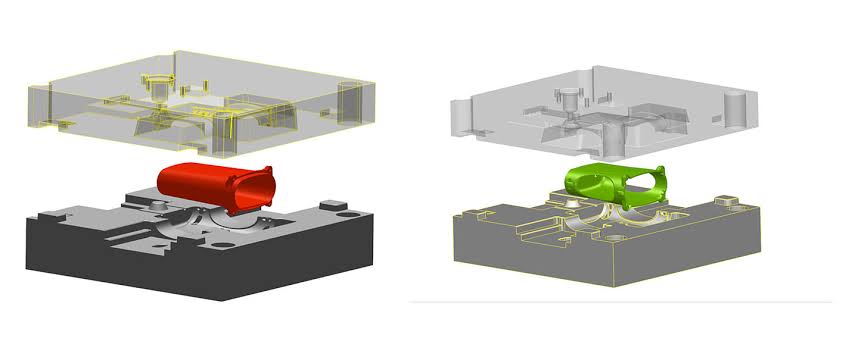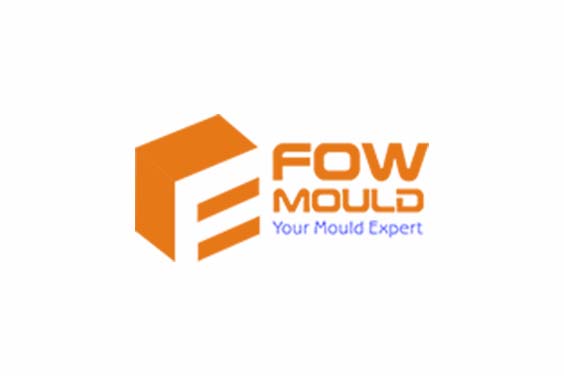Insert molding and over-molding are two popular subsidiaries of injection molding, a commonly used method by manufacturers to produce industrial and commercial products in large quantities. There is usually a comparison of over-molding vs insert molding because both processes require molding a plastic part over another part.
Hence, in this article, we will put the comparison to rest by explaining the differences between insert injection molding and over-molding and discussing factors that will help you choose the ideal option for your project.

Insert Molding vs. Overmolding: What Are the Differences
Insert molding and over-molding enable the creation of multi-material products without using adhesives. They eliminate secondary assembly steps and enhance the look of the final product. However, they have some differences, which include:
Manufacturing Technology
Insert molding manufacturing process involves putting a pre-formed component into the mold cavity, after which molten plastic is injected to cover the component. In other words, it refers to injecting one shot of molten plastic into the mold to encapsulate the inserted component.
Oftentimes, the inserted component is metal and this can be seen in the case of electrical and mechanical appliances like screwdrivers.
The manufacturing process of over-molding, on the other hand, involves placing molten plastic on another plastic material to form one piece. First, a thermoplastic injection creates the hard substrate, after which another molten plastic shot will be injected to encapsulate the substrate.
As it cools, they bond together firmly. This is done for better rigidity, durability, and grip of molded parts, and this can be seen in the case of medical devices like thermometers.
Cycle Time
Insert molded parts process involves more steps and cycle time compared to over-molding. Firstly, the insert needs to be placed appropriately into the mold, then the molding machine must be aligned properly to achieve the desired result. The setting and cross-checking process can take a reasonable amount of time, thereby increasing the cycle time.
Overmolding injection molding tends to be faster since it involves similar materials. It basically has to do with molding a molten plastic onto the substrate without the need for an insert and the steps involved in ensuring its proper alignment. This results in a shorter cycle time and speedy production.
Design Flexibility
Another disparity between insert molding vs over-molding is that the former offers a higher level of flexibility than the latter. This is because insert molding allows the integration of different materials and components into a single molded part. With this, complex designs can be created for enhanced functionalities.
Overmolding also offers some form of flexibility by supporting the combination of multiple plastic materials that have different properties. This allows for better grip and additional aesthetics and functionality like sealing or vibration reduction.
Materials Selection
Insert molding allows for the use of a variety of materials for the insert component, such as metals, ceramics, and plastics. The selection of the suitable insert depends on its properties, including strength, heat resistance, conductivity, chemical resistance, etc. Then, a compatible plastic material will be used to encapsulate the insert.
Overmolding injection molding also supports the use of various materials. The substrate can be made of a variety of materials, be it plastic, metal, or another molded part. But the over-molded part is often made with softer and more flexible materials, like Thermoplastic Elastomers (TPE) and Liquid Silicone Rubber (LSR).
Applications
Insert injection molding is popularly used for applications that require high strength, stability, and functionality. Also, it is commonly used for products that require metal inserts to serve as electricity conductors or heat dissipators. Insert molded parts are prevalent in sectors that use automobile components, medical devices, electronic connectors, and household products.
Overmolding injection molding is popularly used for applications that require soft or ergonomic grips, impact resistance, vibration reduction, or sealing capabilities. It is commonly used when a combination of materials is needed to enhance product functionality and consumers’ experience.
Applications of over-molding processes are prevalent with consumer electronics, healthcare devices, and home appliances.
How to Choose from Insert Molding and Overmolding
Knowing the major compositions about insert molding and over molding processes and differences, how do you choose? Below, we will explore 4 primary factors that should be put into consideration.
Consider the Desired Function
In choosing between insert molding vs over-molding, you need to evaluate the desired functionality of the molded part. If the functions of the part include enhancing structural integrity, electrical conductivity, and heat resistance, insert molding is the ideal choice. This is because it supports the integration of metal or ceramics inserts that can provide the desired properties.
But if the functions of the molded part include improving ergonomics, providing a soft-touch grip, and creating a sealing or vibration-reduction effect, the over-molding injection molding process is preferable. This is because it supports the combination of different materials that can provide the desired functional characteristics.
Take Surface Finish and Texture into Account
Consider the desired surface finish and texture of the molded part. Insert molding enables precise control of the surface finish, including the incorporation of inserts with smooth or patterned texture. This process is more suitable for making smooth, intricate, and demanding surfaces.
The over-molding process, on the other hand, provides a seamless and uniform surface finish across the entire product. It is more suitable for molded parts with a consistent and integrated surface finish.
Evaluate the Tolerance of the Molded Parts
Another factor that can be used to determine the best between over-molding vs insert molding is the tolerance level of the molded part. Basically, insert molded parts have tighter tolerance because the insert provides structural stability and support during the molding process. This injection molding technique can be used for products that require dimensional accuracy.
On the other hand, molded parts made with the over-molding process tend to lose tolerance because of the nature of molding molten plastic over the substrate.
Assess the Production Volume
Before choosing between these two processes, consider the production volume. If it’s a high production volume, over-molding is the better option. The process is more cost-effective and efficient, as it involves shorter cycle time and faster production.
Insert molding, on the other hand, should be used for lower production volumes. Also, it should be used if the benefits of insert integration outweigh the benefits offered by over-molding.
Get Quality Injection Molds from FOW Mould
Are you looking to get quality injection molds from a competent manufacturer? FOW Mould is a professional manufacturer with more than 40 years of experience in producing high-grade injection molds using both insert molding and over-molding.
Flexible Use of Materials
FOW Mould comprises reliable engineers with a wide range of expertise in handling all kinds of materials. Depending on your project, we will assist you to choose the best material and molding technique that is most suitable.
Our materials are sourced from the best vendors across the world and we have a standard factory filled with cutting-edge machinery for efficient production.

One-Stop Services
With a broad range of experience across many fields and the capability to handle a variety of projects, we offer one-stop solutions. At FOW Mould, we meet all your project needs under one roof, including product design, mold design, 3D printing, CNC machining, mold making, injection molding, insert molding, and over-molding.
Conclusion
Insert molding vs over-molding is a common debate because they are both injection molding processes that use similar concepts.
However, they differ based on their manufacturing technology, cycle time, design flexibility, material selection, and applications. Before you choose any of them for your project, you need to consider the desired function, surface finish & texture, tolerance level, and production volume.
For more professional guidance on insert molded and over-molding manufacturing, you can contact us. Our experts are more than ready to assist.
